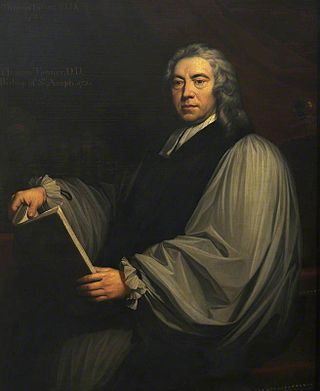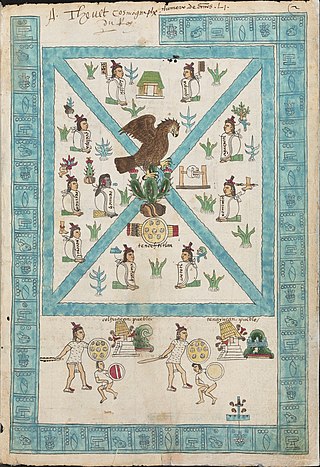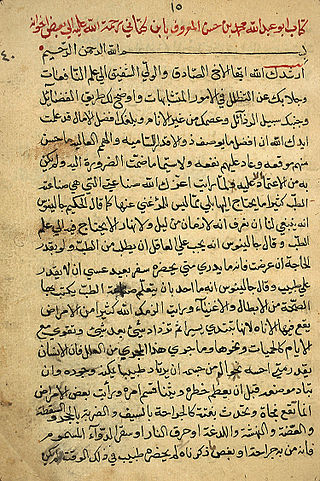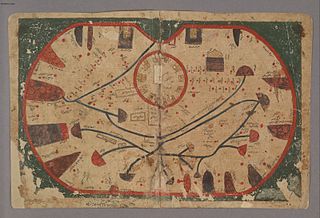Related Research Articles
ʿAbd al-Laṭīf al-Baghdādī, short for Muwaffaq al-Dīn Muḥammad ʿAbd al-Laṭīf ibn Yūsuf al-Baghdādī, was a physician, philosopher, historian, Arabic grammarian and traveller, and one of the most voluminous writers of his time.

The Bodleian Library is the main research library of the University of Oxford, and is one of the oldest libraries in Europe. It derives its name from its founder, Sir Thomas Bodley. With over 13 million printed items, it is the second-largest library in Britain after the British Library. Under the Legal Deposit Libraries Act 2003, it is one of six legal deposit libraries for works published in the United Kingdom, and under Irish law it is entitled to request a copy of each book published in the Republic of Ireland. Known to Oxford scholars as "Bodley" or "the Bod", it operates principally as a reference library and, in general, documents may not be removed from the reading rooms.

John Selden was an English jurist, a scholar of England's ancient laws and constitution and scholar of Jewish law. He was known as a polymath; John Milton hailed Selden in 1644 as "the chief of learned men reputed in this land".

Thomas Tanner was an English antiquary and prelate. He was Bishop of St Asaph from 1732 to 1735.

The Book of Fixed Stars is an astronomical text written by Abd al-Rahman al-Sufi (Azophi) around 964. Following the translation movement in the 9th century AD, the book was written in Arabic, the common language for scholars across the vast Islamic territories, although the author himself was Persian. It was an attempt to create a synthesis of the comprehensive star catalogue in Ptolemy’s Almagest with the indigenous Arabic astronomical traditions on the constellations. The original manuscript no longer survives as an autograph, however, the importance of tradition and the practice of diligence central to Islamic manuscript tradition have ensured the survival of the Book of Stars in later-made copies.

Mr. William Shakespeare's Comedies, Histories, & Tragedies is a collection of plays by William Shakespeare, commonly referred to by modern scholars as the First Folio, published in 1623, about seven years after Shakespeare's death. It is considered one of the most influential books ever published.

Francis Douce was a British antiquary and museum curator.

The Codex Mendoza is an Aztec codex, believed to have been created around the year 1541. It contains a history of both the Aztec rulers and their conquests as well as a description of the daily life of pre-conquest Aztec society. The codex is written using traditional Aztec pictograms with a translation and explanation of the text provided in Spanish. It is named after Don Antonio de Mendoza (1495-1552), the viceroy of New Spain, who supervised its creation and who was a leading patron of native artists.
Muhammad ibn Mahmud al-Amuli was a medieval Persian physician from Amol, Iran.
Muḥammad ibn Yusuf al-Ilāqī was an eleventh-century Persian physician from Khorasan.
Alfred Felix Landon Beeston, FBA was an English Orientalist best known for his studies of Arabic language and literature, and of ancient Yemeni inscriptions, as well as the history of pre-Islamic Arabia. His works were generally published under the name A. F. L. Beeston.

Abu Abd Allah Muhammad ibn al-Husayn Ibn al-Kattani al-Madhiji (951–1029), sometimes nicknamed "al-Mutatabbib", was a well-known Arab scholar, philosopher, physician, astrologer, man of letters, and poet.
Oxford, Bodleian Library, Rawlinson B 502 is a medieval Irish manuscript which presently resides in the Bodleian Library, Oxford. It ranks as one of the three major surviving Irish manuscripts to have been produced in pre-Norman Ireland, the two other works being the Lebor na hUidre and the Book of Leinster. Some scholars have also called it the Book of Glendalough, in Irish Lebar Glinne Dá Locha, after several allusions in medieval and early modern sources to a manuscript of that name. However, there is currently no agreement as to whether Rawlinson B 502, more precisely its second part, is to be identified as the manuscript referred to by that title.
Oxford, Bodleian Library, Rawlinson B. 512 is an Irish vellum manuscript in quarto, numbering 154 folios and written in double columns by multiple scribes in the course of the late 15th and early 16th centuries. The compilation presents a diverse range of medieval texts in verse and in prose, some of which are in Latin, while the vast majority is written in the Irish language. It is a composite manuscript, consisting of five portions which were originally distinct volumes: I, II, III, IV and V.

A Catalogue of Books Printed in the Fifteenth Century now in the Bodleian Library is a short-title catalogue of more than 5,600 incunabula held in the Bodleian Library at the University of Oxford. Bod-inc. stands out among incunabula catalogues for its detailed listing of the contents of each edition being described. It was published on 7 July 2005 by Oxford University Press in six volumes.
Hatton Gospels is the name now given to a manuscript produced in the late 12th century or early 13th century. It contains a translation of the four gospels into the West Saxon dialect of Old English. It is a nearly complete gospel book, missing only a small part of the Gospel of Luke. It is now in the Bodleian Library, Oxford, as MS Hatton 38. The fullest description of the manuscript is by Takako Kato, in Treharne, et al., eds., Production and Use of English Manuscripts, 1020-1220.
Rev. Nathaniel Crynes (1685/6-1745), was an English antiquary, physician and Fellow of St John's College, Oxford.
Emilie Savage-Smith is an American-British historian of science known for her work on science in the medieval Islamic world and medicine in the medieval Islamic world.

The Book of Curiosities is an anonymous 11th-century Arabic cosmography from Fatimid Egypt containing a series of early illustrated maps of the world and celestial diagrams of the universe and sky. TheBook of Curiosities contains 17 maps in total, 14 of which are extremely rare not only in Islamic cartography but also in greater medieval map history. The cosmography includes the earliest recorded map of Sicily as well as a rectangular world map, considered the earliest surviving map with a graphic scale. The autograph manuscript has not survived, but the Bodleian Library of Oxford University acquired one of the only known copies of the manuscript in 2002, making its contents widely accessible today due to its digitization. Based on the production processes and physical materials of the copy, such as paper and pigment, scholars date the production of this copy to the early 13th century.
Oxford, Bodleian Library, MS Fairfax 16, also known as the Fairfax Manuscript, is a fifteenth-century Middle English poetic anthology which contains one of the finest collections of Chaucerian verse of this period. Owned and commissioned by John Stanley of Hooton, Cheshire, Fairfax 16 was produced in Oxford or London in the mid-fifteenth century. Thomas Fairfax bequeathed it to the Bodleian Library in 1671.
References
- Savage-Smith, Emilie (2005), A descriptive catalogue of Oriental manuscripts at St John's College, Oxford, Oxford:Oxford University Press. ISBN 0-19-920195-1
- Savage-Smith, Emilie (2011) "A New Catalogue of Arabic Manuscripts in the Bodleian Library, University of Oxford, Vol.I, Medicine" Oxford University Press